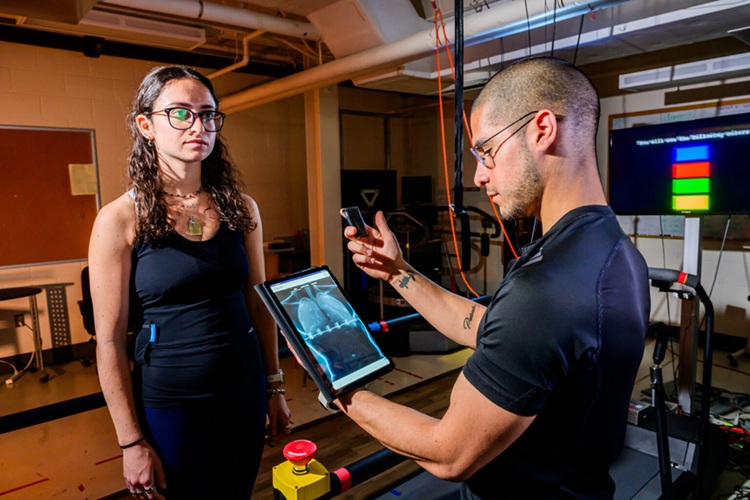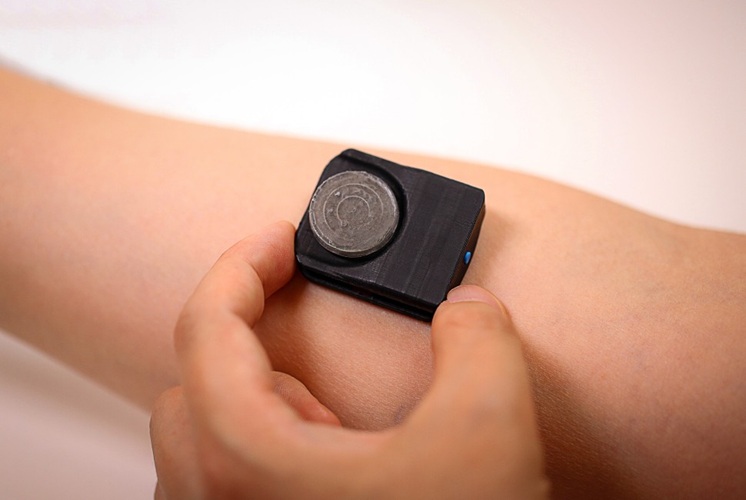Facial Recognition Continuously Monitors ICU Patients
|
By HospiMedica International staff writers Posted on 12 Jun 2019 |
A new study evaluates an automated system that uses facial recognition technology to continuously monitor the safety of patients admitted to the intensive care unit (ICU).
Developed by researchers at Yokohama City University (Japan), the system uses ceiling-mounted cameras placed above the patients' beds. After collecting about 300 hours of daytime image data of patients facing the camera in body positions that showed their face and eyes clearly, 99 images were subject to a machine-learning (ML) algorithm to analyze them. Based on input from the observational data, especially from around the subject's face, the ML algorithm learned to identify potential high-risk behavior in a process that resembles the way a human brain learns new information.
In a proof of concept study that included 24 postoperative patients (average 67 years of age) who were admitted to the ICU in Yokohama City University Hospital between June and October 2018, the ML algorithm was able to identify high risk unsafe behavior--such as accidentally removing their breathing tube--with 75% accuracy. They also suggested that monitoring consciousness may improve accuracy by helping to distinguish between high-risk behavior and voluntary movement. The study was presented at the Euroanaesthesia annual congress, held during June 2019 in Vienna (Austria).
“Using images we had taken of a patient's face and eyes we were able to train computer systems to recognize high-risk arm movement,” said lead author and study presenter Akane Sato, MD. “We were surprised about the high degree of accuracy that we achieved, which shows that this new technology has the potential to be a useful tool for improving patient safety, and is the first step for a smart ICU which is planned in our hospital.”
Facial recognition systems use biometrics to map facial features from a photograph or a video. The geometry of the face is then analyzed, with key factors including interpapillary distance and the distance from forehead to chin. In all, there are over 65 quantifiable features that can be used to identify a face, generating a unique facial signature.
Related Links:
Yokohama City University
Developed by researchers at Yokohama City University (Japan), the system uses ceiling-mounted cameras placed above the patients' beds. After collecting about 300 hours of daytime image data of patients facing the camera in body positions that showed their face and eyes clearly, 99 images were subject to a machine-learning (ML) algorithm to analyze them. Based on input from the observational data, especially from around the subject's face, the ML algorithm learned to identify potential high-risk behavior in a process that resembles the way a human brain learns new information.
In a proof of concept study that included 24 postoperative patients (average 67 years of age) who were admitted to the ICU in Yokohama City University Hospital between June and October 2018, the ML algorithm was able to identify high risk unsafe behavior--such as accidentally removing their breathing tube--with 75% accuracy. They also suggested that monitoring consciousness may improve accuracy by helping to distinguish between high-risk behavior and voluntary movement. The study was presented at the Euroanaesthesia annual congress, held during June 2019 in Vienna (Austria).
“Using images we had taken of a patient's face and eyes we were able to train computer systems to recognize high-risk arm movement,” said lead author and study presenter Akane Sato, MD. “We were surprised about the high degree of accuracy that we achieved, which shows that this new technology has the potential to be a useful tool for improving patient safety, and is the first step for a smart ICU which is planned in our hospital.”
Facial recognition systems use biometrics to map facial features from a photograph or a video. The geometry of the face is then analyzed, with key factors including interpapillary distance and the distance from forehead to chin. In all, there are over 65 quantifiable features that can be used to identify a face, generating a unique facial signature.
Related Links:
Yokohama City University
Latest Health IT News
- Printable Molecule-Selective Nanoparticles Enable Mass Production of Wearable Biosensors
- Smartwatches Could Detect Congestive Heart Failure
- Versatile Smart Patch Combines Health Monitoring and Drug Delivery
- Machine Learning Model Improves Mortality Risk Prediction for Cardiac Surgery Patients
- Strategic Collaboration to Develop and Integrate Generative AI into Healthcare
- AI-Enabled Operating Rooms Solution Helps Hospitals Maximize Utilization and Unlock Capacity
- AI Predicts Pancreatic Cancer Three Years before Diagnosis from Patients’ Medical Records
- First Fully Autonomous Generative AI Personalized Medical Authorizations System Reduces Care Delay
- Electronic Health Records May Be Key to Improving Patient Care, Study Finds
- AI Trained for Specific Vocal Biomarkers Could Accurately Predict Coronary Artery Disease
Channels
Critical Care
view channel
Novel Intrabronchial Method Delivers Cell Therapies in Critically Ill Patients on External Lung Support
Until now, administering cell therapies to patients on extracorporeal membrane oxygenation (ECMO)—a life-support system typically used for severe lung failure—has been nearly impossible.... Read more
Generative AI Technology Detects Heart Disease Earlier Than Conventional Methods
Detecting heart dysfunction early using cost-effective and widely accessible tools like electrocardiograms (ECGs) and efficiently directing the right patients for more expensive imaging tests remains a... Read more
Wearable Technology Predicts Cardiovascular Risk by Continuously Monitoring Heart Rate Recovery
The heart's response to physical activity is a vital early indicator of changes in health, particularly in cardiovascular function and mortality. Extensive research has demonstrated a connection between... Read more
Wearable Health Monitoring Device Measures Gases Emitted from and Absorbed by Skin
The skin plays a vital role in protecting our body from external elements. A key component of this protective function is the skin barrier, which consists of tightly woven proteins and fats that help retain... Read moreSurgical Techniques
view channel
Intravascular Imaging for Guiding Stent Implantation Ensures Safer Stenting Procedures
Patients diagnosed with coronary artery disease, which is caused by plaque accumulation within the arteries leading to chest pain, shortness of breath, and potential heart attacks, frequently undergo percutaneous... Read more
World's First AI Surgical Guidance Platform Allows Surgeons to Measure Success in Real-Time
Surgeons have always faced challenges in measuring their progress toward surgical goals during procedures. Traditionally, obtaining measurements required stepping out of the sterile environment to perform... Read morePatient Care
view channel
Portable Biosensor Platform to Reduce Hospital-Acquired Infections
Approximately 4 million patients in the European Union acquire healthcare-associated infections (HAIs) or nosocomial infections each year, with around 37,000 deaths directly resulting from these infections,... Read moreFirst-Of-Its-Kind Portable Germicidal Light Technology Disinfects High-Touch Clinical Surfaces in Seconds
Reducing healthcare-acquired infections (HAIs) remains a pressing issue within global healthcare systems. In the United States alone, 1.7 million patients contract HAIs annually, leading to approximately... Read more
Surgical Capacity Optimization Solution Helps Hospitals Boost OR Utilization
An innovative solution has the capability to transform surgical capacity utilization by targeting the root cause of surgical block time inefficiencies. Fujitsu Limited’s (Tokyo, Japan) Surgical Capacity... Read more
Game-Changing Innovation in Surgical Instrument Sterilization Significantly Improves OR Throughput
A groundbreaking innovation enables hospitals to significantly improve instrument processing time and throughput in operating rooms (ORs) and sterile processing departments. Turbett Surgical, Inc.... Read moreBusiness
view channel
Expanded Collaboration to Transform OR Technology Through AI and Automation
The expansion of an existing collaboration between three leading companies aims to develop artificial intelligence (AI)-driven solutions for smart operating rooms with sophisticated monitoring and automation.... Read more















